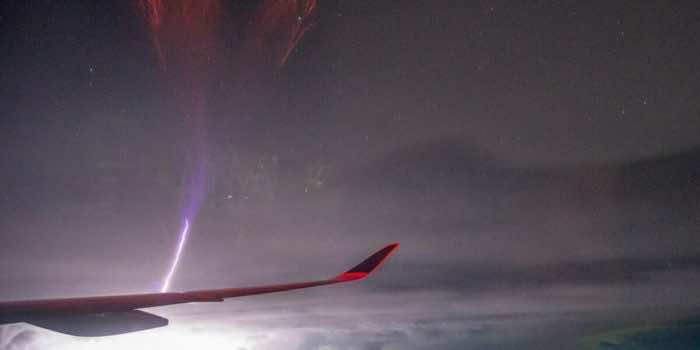Scientists have come up with the description of the most powerful “gigantic jet” of lightning ever observed. Its blasted energy is equivalent to 60 regular lightning bolts upwards into space.
These gigantic jets are powerful bursts of electrical energy that are thrown from storm clouds – not down to the ground but up to the ionosphere. They belong to a growing group of transient events that occur in the upper atmosphere during storms. The height makes it harder to observe them.
The event took place in May 2018 during a storm over Oklahoma, where it was simultaneously captured by several instruments, including the ground-based Lightning Mapping Array, the space-based Geostationary Lightning Mapper (GLM) and Geostationary Operational Environmental Satellite (GOES) network, and a citizen scientist snapping pictures with a low-light camera.

It was the most powerful one seen so far, throwing about 300 coulombs of electrical charge upwards. For comparison, a normal lightning bolt usually tops out around five coulombs.
Different types of electromagnetic waves were emitted from different structures within the jet. Very high frequency (VHF) radio sources were detected at high altitudes of 22 to 45 km (14 to 28 miles), while optical emissions remained closer to the cloud top from which the jet originated, at altitudes of 15 to 20 km (9.3 to 12.4 miles).
“The VHF and optical signals definitively confirmed what researchers had suspected but not yet proven: that the VHF radio from lightning is emitted by small structures called streamers that are at the very tip of the developing lightning, while the strongest electric current flows significantly behind this tip in an electrically conducting channel called a leader,” said Steve Cummer, an author of the study.
“For whatever reason, there is usually a suppression of cloud-to-ground discharges,” said Levi Boggs, corresponding author of the study. “There is a buildup of negative charge, and then we think that the conditions in the storm top weaken the uppermost charge layer, which is usually positive. In the absence of the lightning discharges we normally see, the gigantic jet may relieve the buildup of excess negative charge in the cloud.”
The research was published in the journal Science Advances.


